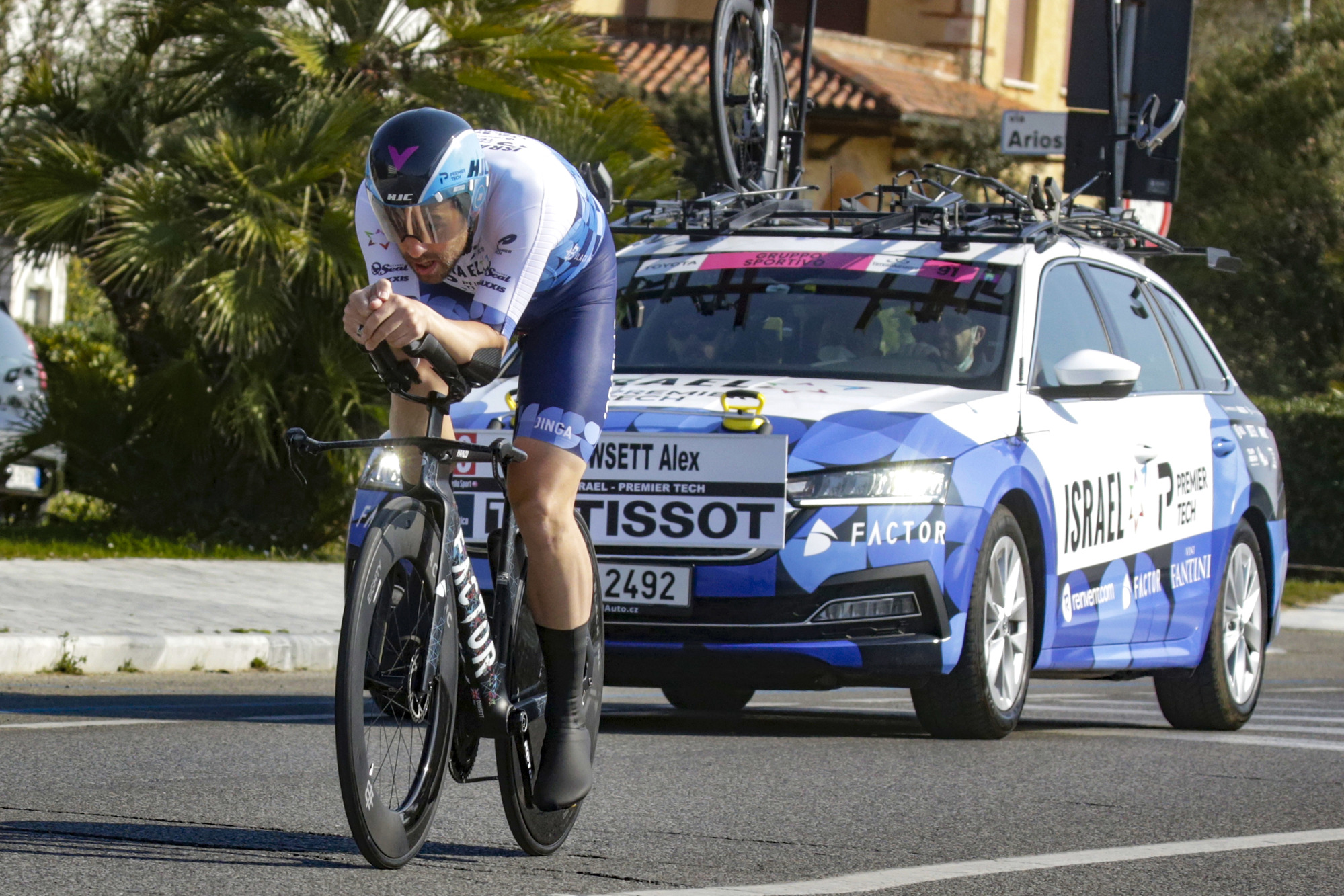Dowsett sees 'grey area' in stacking team cars for time trial aero gains
Advantage sought by Ganna and others straddles 'the line between the spirit of fair play and the rules' says TT specialist

Alex Dowsett has suggested that the likes of Filippo Ganna and Remco Evenepoel are exploiting a 'grey area' in being followed by team cars stacked with spare bikes during time trials.
Ganna and Evenepoel were both trailed by team cars carrying several spares as they finished first and second in Monday's Tirreno-Adriatico time trial. As reported by Cyclingnews this week, increasing the surface area of a following team car increases the aerodynamic advantage gained by the rider.
At the start of Wednesday's Tirreno-Adriatico stage, Cyclingnews asked Dowsett, one of the world's leading time trialists and keenest pursuers of aerodynamic gains – who was followed by a single spare bike on Monday – for his take on the matter.
"I just think they must have some prototype tyres that have a high chance of puncturing, so they need 10 bikes in case there's a puncture. Obviously that's the reason for so many bikes on the roof racks," Dowsett said, before making clear: "That's a joke obviously."
Dowsett's true feelings are less clear but he did suggest the practise raises several questions relating to fair play, and he twice used the term 'grey area'.
Team cars are supposed to stay at least 10 metres behind a rider but there is no UCI rule dictating the number of spare bikes permitted on a team car during a time trial.
"It's in the grey [area] – the grey being the line between what's in the spirit of fair play and what's in the UCI rule book," Dowsett stated.
Get The Leadout Newsletter
The latest race content, interviews, features, reviews and expert buying guides, direct to your inbox!
"If there's not a rule against it, then it's not cheating," he added. "We understand so much about aerodynamics now that we see these things and obviously the press and social media bring these things to light.
"A skinsuit is an aerodynamic gain that's making the rider faster, whereas a push from behind... Is that in the spirit of fair play? There's just a lot of questions that come from it."
Part of that question revolves around how much of a gain there is to be had. Belgian scientist Bert Blocken has calculated that a car following at 10 metres offers a drag reduction of about 0.23 per cent, translating to 0.078 seconds per kilometre.
Ineos Grenadiers apparently believe there's some value, with Ganna – but not other riders, even GC leaders – trailed by stacked cars in three of his four time trials this year and on the final day of last year's Giro d'Italia.
"It's not something you can feel," Dowsett said. "You'd still be pushing air. Nothing would change from what's being pushed in front of you. Your power wouldn't change, you might look down and be like 'oh I'm doing 55kph instead of 54, but it wouldn't be something you'd notice."
Likewise, Dowsett acknowledged that Ganna is so dominant as to render those gains almost irrelevant, but he did still suggest the practice of stacking cars raised ethical questions.
"Cycling teams are a business. There's a set of rules and it's like 'ok this isn't breaking the rules so we do it'. But actually, when it all comes to light, does it discredit the rider?" he pondered
"Because it's like, 'well did you win because you had the push?' Ultimately, with the gaps Ganna can produce to second place, he doesn't need that kind of external influence. No one actually knows the gain.
"If they're sitting 10 metres behind, maybe it's a fraction of a percentage gain. If it's 30 metres, maybe it's a zero per cent gain. It's in the grey."

Stephen is one of the most experienced member of the Cyclingnews team, having reported on professional cycling since 1994. He has been Head of News at Cyclingnews since 2022, before which he held the position of European editor since 2012 and previously worked for Reuters, Shift Active Media, and CyclingWeekly, among other publications.